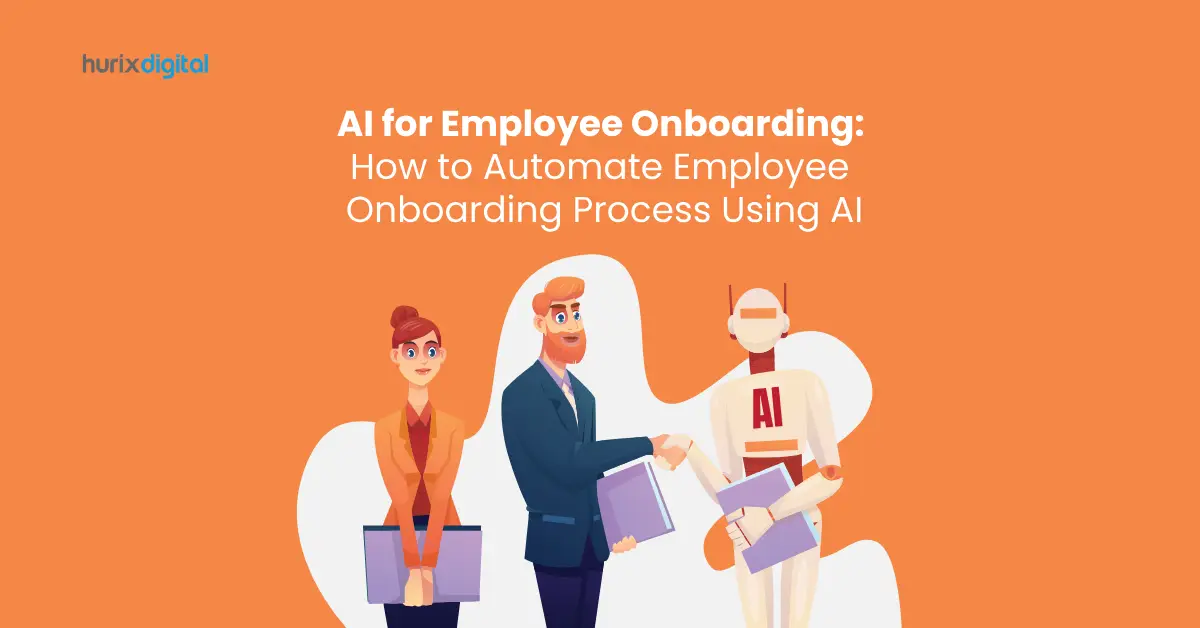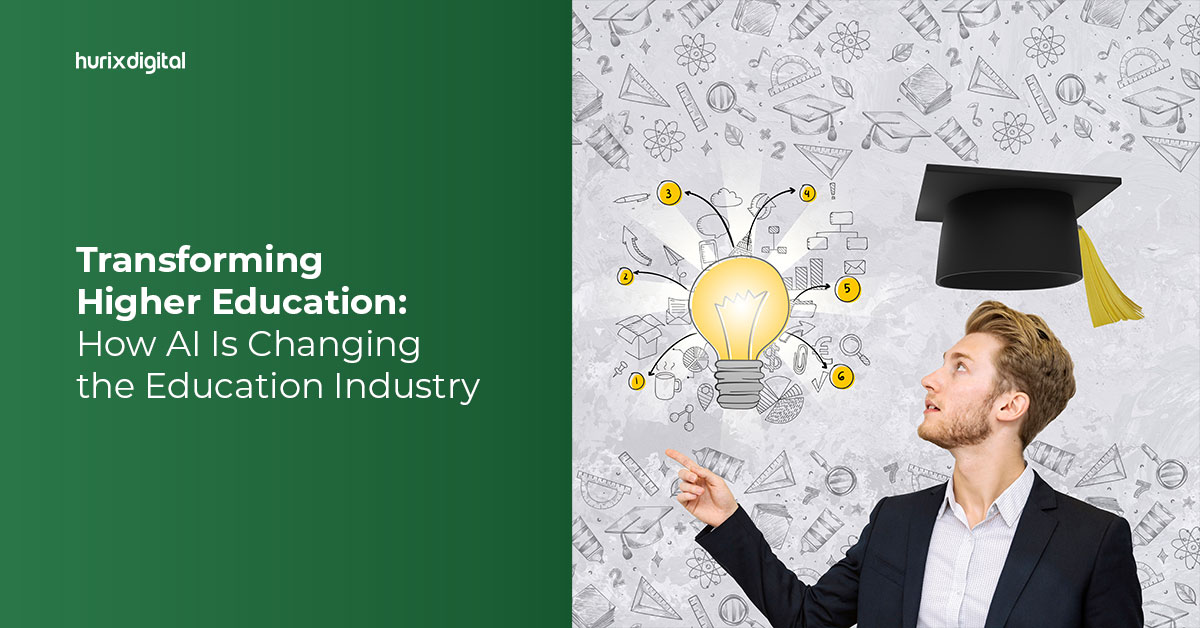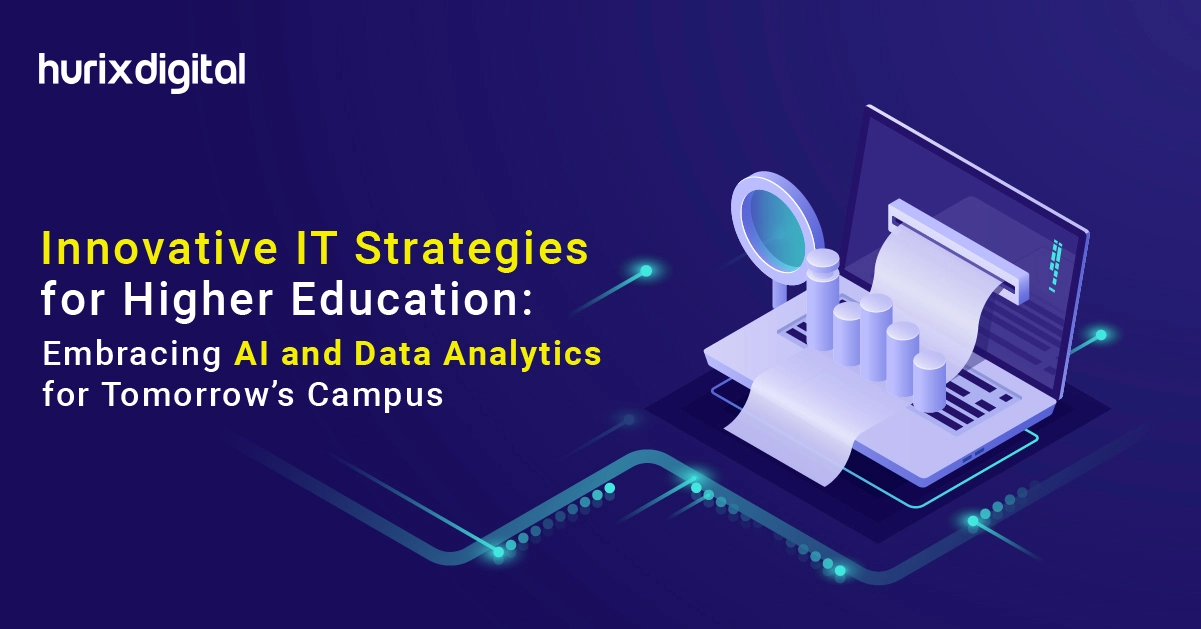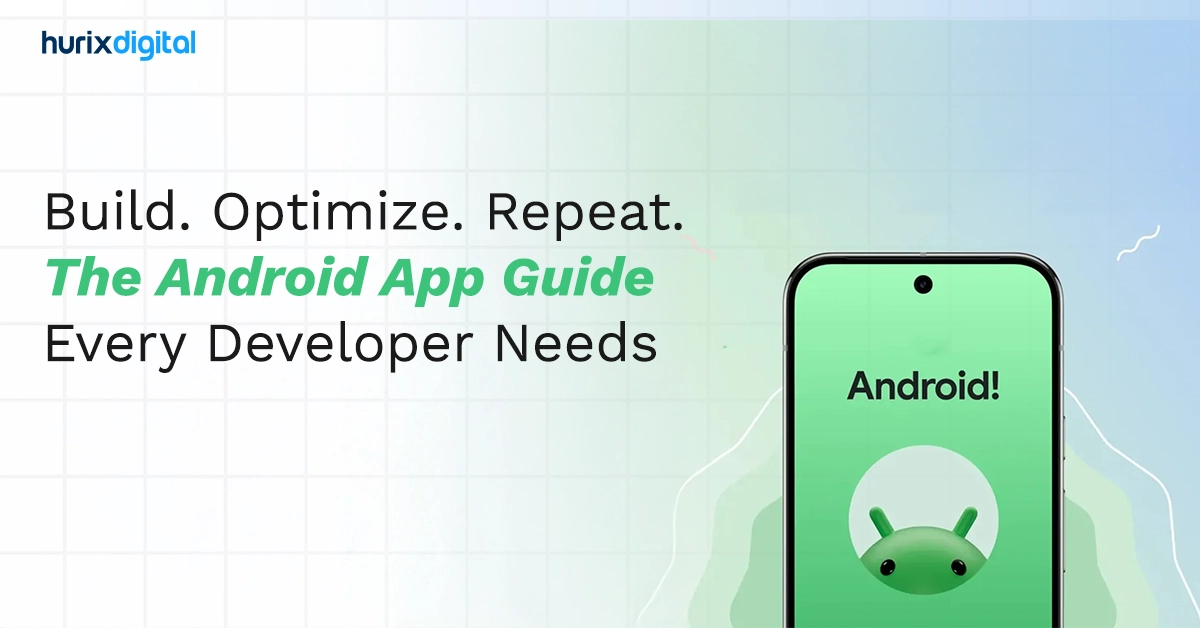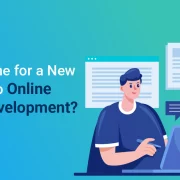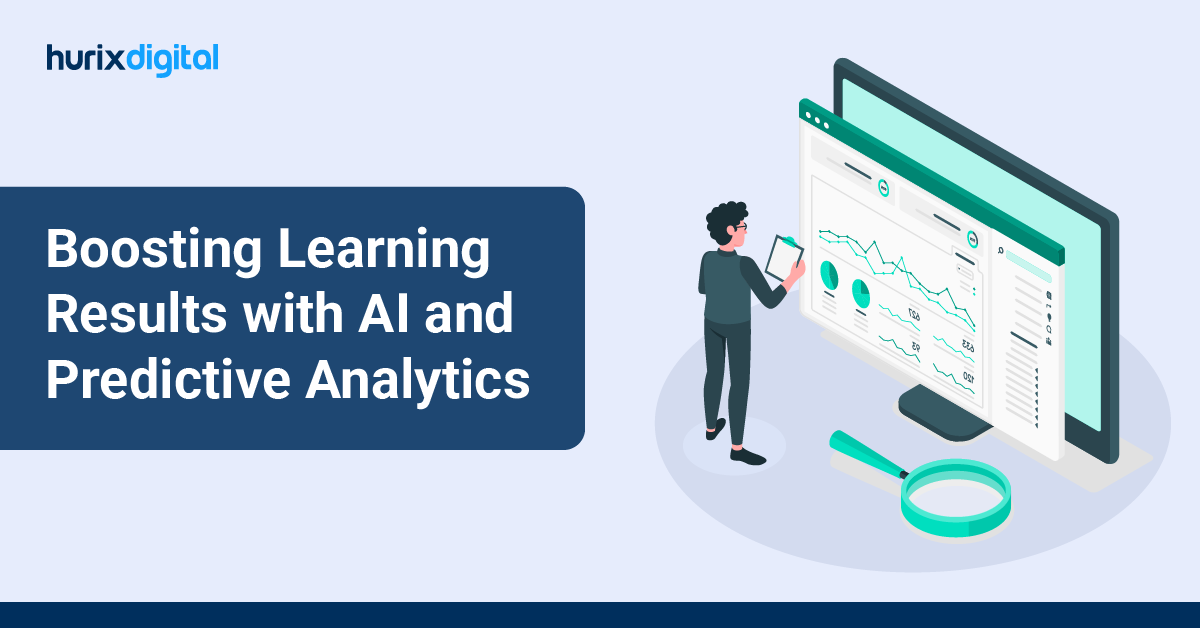
How AI Predictive Analytics Improve Student Success in Higher Ed
Traditional data processing tools tracked online activity and reported past engagement behaviours and patterns. Based on the data, organizations could shape future goals. However, this approach was often more tactical than strategic, lacking the forward-looking insights that predictive analytics provides.
Conversely, predictive analysis is an advanced form of analytics that leverages historical data, machine learning (ML) techniques, and statistical algorithms to help organizations forecast future outcomes.
The sheer number of permutations and combinations enabled by the algorithms empowers organizations to be prepared for the future. Organizations can forecast future performance in varied scenarios, in turn shaping future goals more strategically.
Predictive analytics is considered to be one of the top seven AI trends to revolutionize the world.
The predictive algorithms can be leveraged to uncover the vulnerabilities in students’ academic progression and facilitate adequate and proactive remedial interventions. Machine learning (ML) techniques, statistics, big data, and AI-driven algorithms are combined to predict future trends impacting learner outcomes.
This blog deconstructs predictive analytics and its role in transforming students’ learning paths.
Table of Contents:
- What is AI & Predictive Analytics?
- 10 Benefits of Implementing Predictive Analytics for Students
- Enhances the Efficacy of the Curriculum
- Offers Formative Feedback
- Helps in the Strategic Segmentation of Learners
- Facilitates Personalized Learning
- Paves the Way For Better Student Retention
- Improves Policy-Related Decision-Making
- Allows Student-Oriented Recommendations in More Informed Manner
- Makes Learners More Responsive
- Creates Avenues For Continuous Improvement
- Enhances Career Counseling and Placement Services
- 7 Strategies for Curriculum Integration to Explore
- Design Your Curriculum with AI and Predictive Analytics in Mind
- Develop the Knowledge and Skills of Your Faculty
- Upgrade Your Infrastructure and Resources
- Engage Your Students in Research and Practical Applications
- Address Ethical Considerations in Your Curriculum
- Empower Your Faculty Through Ongoing Development
- Boost Your System for Successful Education
- Challenges & Considerations to Check Out
- In Conclusion
What is AI & Predictive Analytics?
Artificial Intelligence is simply the term used to describe computer programs that can reason independently and carry out tasks that would typically require human intelligence. This covers everything, from YouTube’s recommendation system to ChatGPT.
In contrast, predictive analytics employs machine learning and statistical methods to determine the probability of future events.
Predictive analytics and artificial intelligence working together can unearth a multitude of useful insights that will be extremely valuable for use cases in higher education.
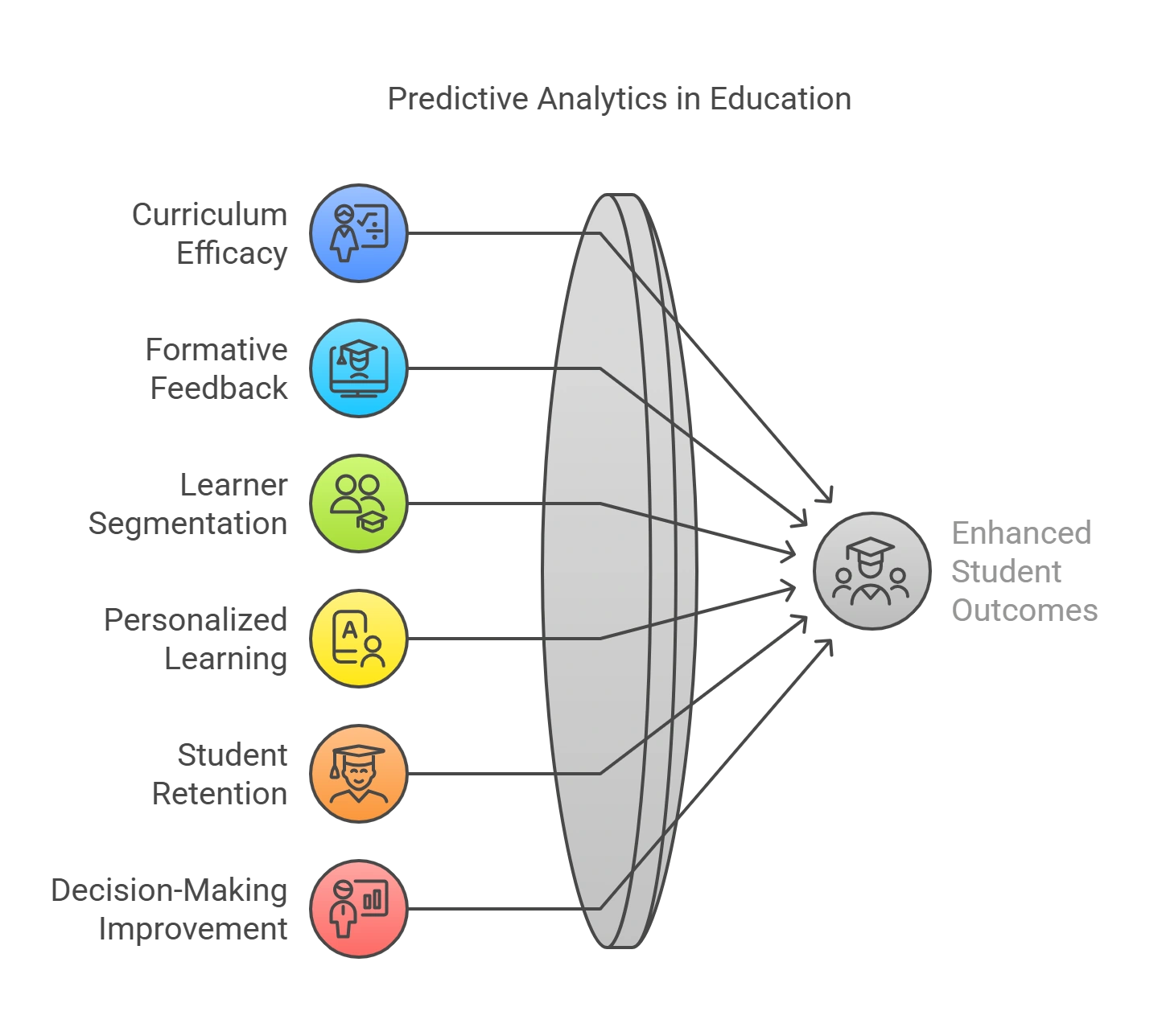
10 Benefits of Implementing Predictive Analytics for Students
A higher education institute can rely on insights into students’ performance through predictive analytics to offer targeted and customized interventions. This is why 89% of US universities already invested in predictive modeling to boost student outcomes.
About 26% of students opt for one online course, highlighting the notable shift in higher education. This growing preference emphasizes the importance of adopting creative methods when designing curricula.
Here are 10 ways predictive analytics have known to enhance student outcomes:
1. Enhances the Efficacy of the Curriculum
Predictive analytics evaluates student performance data to identify curriculum areas that need improvement. Institutions can refine and update curricula to strengthen conceptual understanding by pinpointing topics where students struggle.
2. Offers Formative Feedback
Predictive analytics and machine learning enable the creation of dynamic student dashboards that deliver timely formative feedback on assessments. By analyzing students’ performance data, these dashboards can recommend suitable courses and learning materials tailored to individual needs.
Through in-depth analysis, educators gain insights into students’ learning preferences and identify areas where they struggle. This data-driven approach enhances student motivation and helps them focus their efforts effectively, ultimately leading to improved academic outcomes.
3. Helps in the Strategic Segmentation of Learners
Demographics and other broader characteristics are sidelined to group learners based on subtle traits like academic preferences, usage of particular resources, learning inclinations, etc. Such segmentation proves useful for recommending curated learning content and forming focused study groups.
4. Facilitates Personalized Learning
Predictive analytics can be leveraged to build data-analytic models that dissect relatable patterns in individual learning efforts. This is beneficial for identifying students’ learning gaps and shortcomings in their approaches. Further, anomalies in the academic curriculum also become apparent.
The insights drawn from analytic models can be used to customize learning modules in alignment with individual students’ learning styles and academic goals. Personalizing learning pathways enriches students’ learning experience and enhances course completion rates.
5. Paves the Way For Better Student Retention
The predictive models help educational institutes get actionable insights into the engagement levels of enrolled students.
The models highlight trends in students’ academic performances and help segregate those who are at risk. Consequently, faculty members can intervene at an appropriate time to offer support, mentoring, and counseling, which can considerably improve students’ retention rates.
Incidentally, Utah’s Western Governors University succeeded in increasing the graduation rate by 5% for its 4-year undergraduate course from 2018–2020 through predictive modeling. This approach is also useful for minimizing the risk of a backlog that students might face in their learning journey.
6. Improves Policy-Related Decision-Making
Predictive analytics empowers higher education institutions to make informed policy decisions by forecasting future scenarios based on comprehensive data insights.
By leveraging analytics, institutions can effectively address issues such as the DFWI (Drop, Fail, Withdraw, Incomplete) indicator, enabling strategic policy adjustments.
For instance, the University of North Texas utilized data visualization and analytics to refine procedural policies, ultimately boosting retention rates and improving educational quality. This initiative enhanced student outcomes and yielded substantial cost savings, totalling $450,000 for the university.
7. Allows Student-Oriented Recommendations in More Informed Manner
Educators can monitor the performance of students in a sustained manner through digital surveillance and analytical methods.
The big data that is collected can be modelled using AI to predict the students’ success or failure probability rates in summative assessments. Predictive analytics in big data helps teachers identify learners who need more attention. Accordingly, relevant services or content can be recommended to students to ensure their success.
8. Makes Learners More Responsive
Predictive analytics can uncover trends, which can increase learners’ responsiveness to teachers’ attentive care.
This way, educators can decide on corrective measures based on predictive models to improve learners’ overall performance. Eventually, they can make more conscious decisions regarding the use of peer reviews, micro-learning videos, and weekend classes to enhance learners’ engagement.
9. Creates Avenues For Continuous Improvement
Educational institutions can embark on a path of continuous improvement by systematically gathering and analyzing relevant data from students, faculty, and administrators.
This data-driven approach enables institutions to enhance departmental efficiency through proactive strategic planning.
For example, Orion Starve WPI implemented self-service dashboards powered by predictive analytics, empowering departments to assess and optimize their operations autonomously. This capability allows departments to make informed decisions through ad hoc analyses, ultimately improving student outcomes.
10. Enhances Career Counseling and Placement Services
Predictive analytics can revolutionize career counselling and placement services by analyzing students’ academic performance, skills, and interests.
By predicting potential career paths based on data insights, institutions can offer personalized guidance to students and match them with suitable internship opportunities, job placements, or further education options.
This proactive approach increases student satisfaction and boosts post-graduation success rates, ensuring students enter the workforce well-prepared and aligned with their career aspirations.
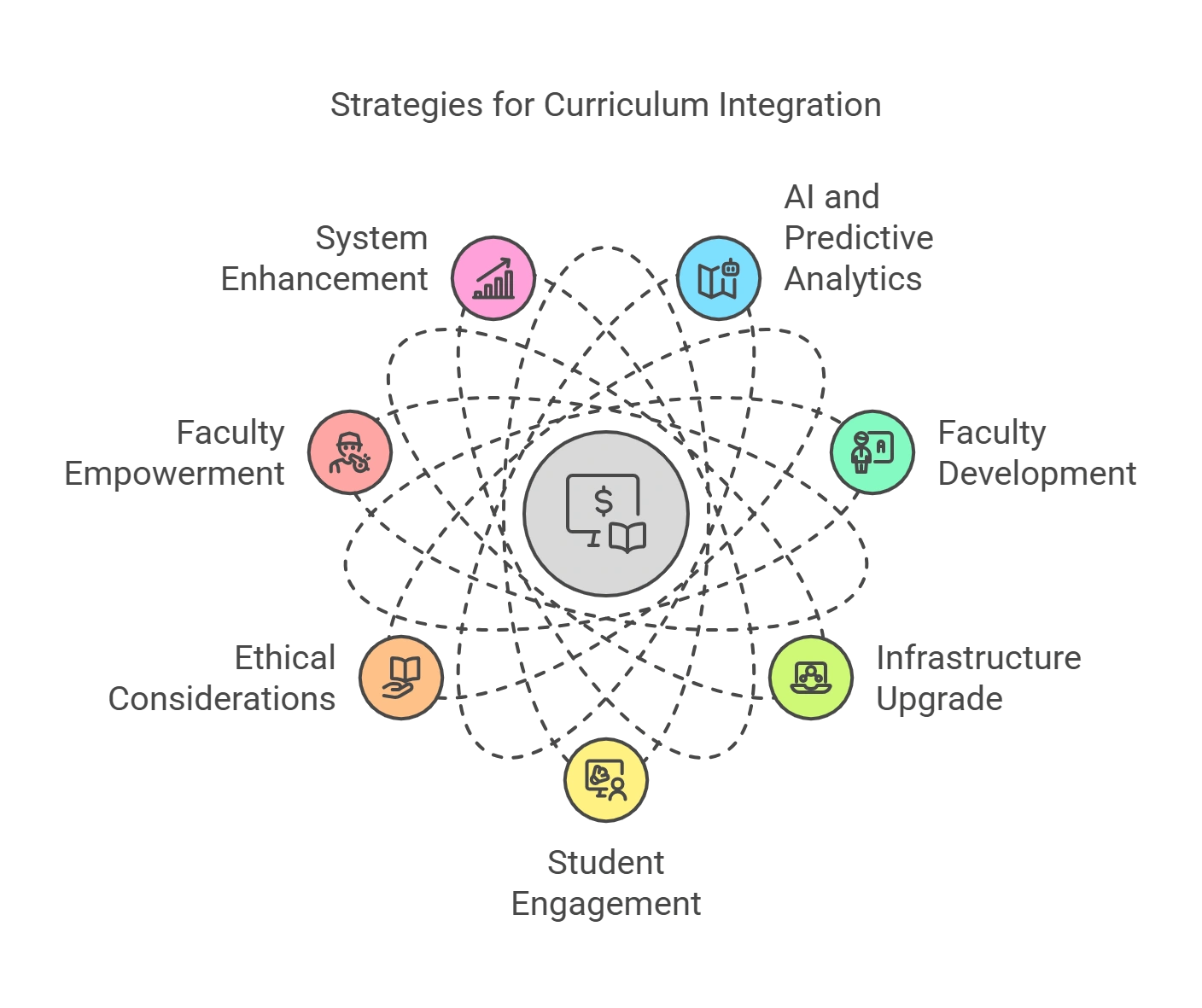
7 Strategies for Curriculum Integration to Explore
Here are the top strategies for integrating AI & predictive analytics into higher education:
1. Design Your Curriculum with AI and Predictive Analytics in Mind
To provide a solid foundation for your curriculum’s AI and predictive analytics integration, think about including basic courses that go over the fundamentals of data science, machine learning, and AI ethics.
The next step is to proceed to more specialized schooling, which offers advanced courses with increasingly sophisticated AI algorithms, big data analytics, and other subjects.
Think of taking an interdisciplinary approach by promoting the incorporation of analytics and AI in non-tech domains like business, sociology, and biology, to name a few.
2. Develop the Knowledge and Skills of Your Faculty
Your teachers must stay knowledgeable about the newest educational techniques and technological advancements.
To that end, think about holding frequent workshops, training sessions, and other types of ongoing professional development programs that impart the finest analytics and AI techniques.
3. Upgrade Your Infrastructure and Resources
You can reap the benefits offered by AI and predictive analytics only when you have the infrastructure to handle them.
For the best use of artificial intelligence (AI) and the insights provided by analytics, make sure your organization does not cut corners when it comes to modern computer labs furnished with the newest hardware and software.
4. Engage Your Students in Research and Practical Applications
Urge students to work on capstone projects that use AI and predictive analytics to solve real-world issues. These assignments can produce creative solutions and are essential for putting academic knowledge to use in real-world situations.
5. Address Ethical Considerations in Your Curriculum
Ensure that discussions on the ethical implications of AI and data usage are a staple in the curriculum.
Preparing students to make conscientious decisions professionally is crucial as AI technologies become increasingly prevalent in various sectors.
6. Empower Your Faculty Through Ongoing Development
Regular training sessions can help your faculty stay abreast of the latest technologies and teaching methodologies.
Partnering with tech companies and inviting guest lecturers from the industry can provide practical insights and enhance teaching quality within your institution.
7. Boost Your System for Successful Education
Invest in cutting-edge computer labs furnished with the newest hardware and software to promote hands-on learning.
MOOCs and other online learning resources can be used to supplement conventional instruction and provide flexibility.
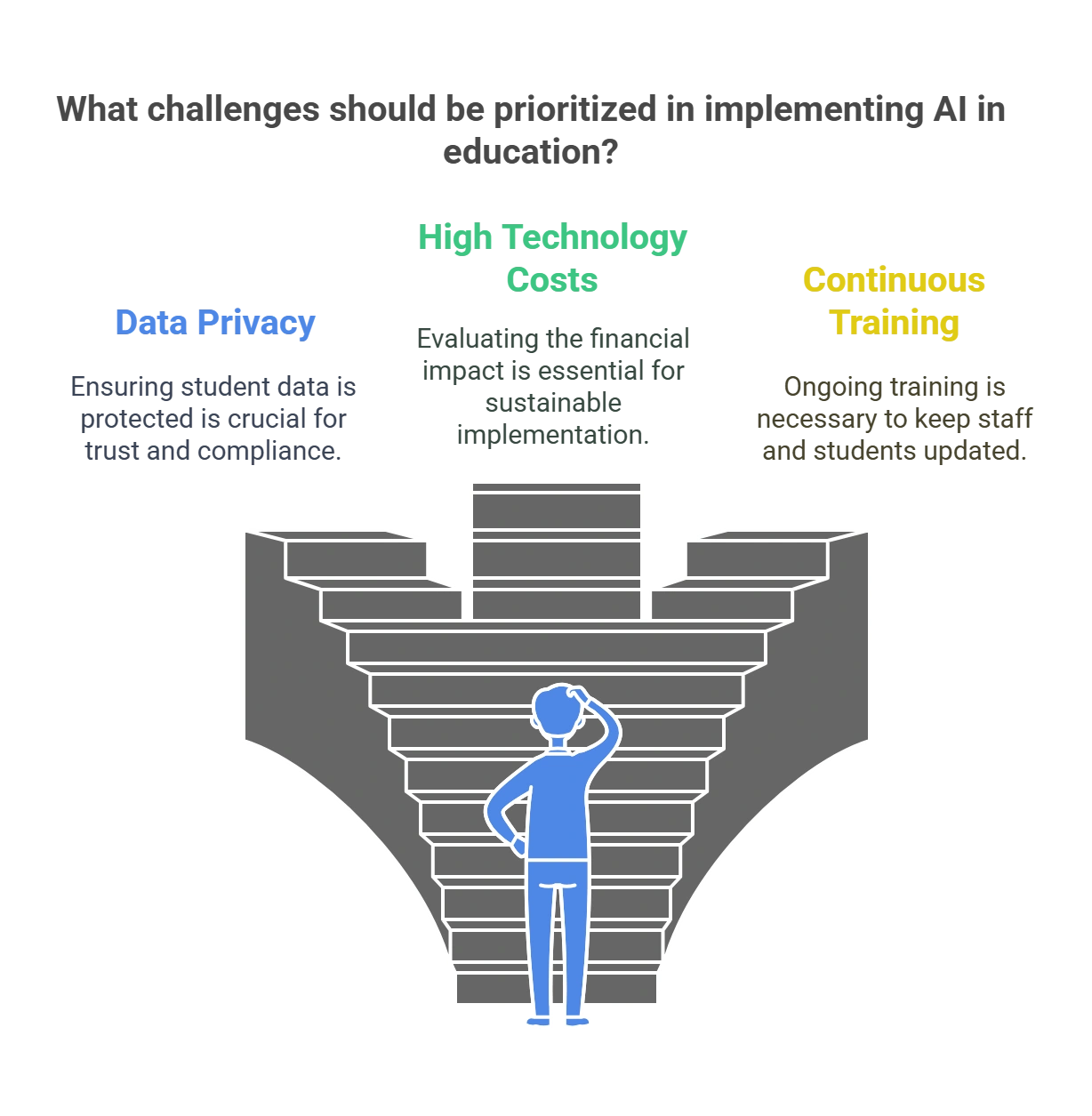
Challenges & Considerations to Check Out
Integrating AI and predictive analytics isn’t without its challenges, which need to be well understood before proceeding.
1. Data Privacy
Data privacy becomes increasingly important because both AI and predictive analytics depend on vast volumes of data to work well.
It is crucial to follow particular procedures when working with such massive volumes of data to maintain the security and privacy of the information. This is especially true when working with data that pertains to thousands of students.
All firms that go digital should follow the many guidelines and best practices that support cybersecurity, which is a broad and ever-evolving field in and of itself.
2. High Costs of Technology
These expensive technologies can potentially increase the gap between the affluent and the impoverished.
The gap between the affluent and the poor is already growing, yet elite universities can afford to provide their students with the greatest technology, facilities, and AI-infused education. This is not the case for second-tier universities.
3. Continuous Training
Keeping pace with technology requires regularly investing in training your students and faculty with the latest technology and gadgets. This substantially increases the overall cost of operations and needs to be planned for.
Issues like data privacy, the high expense of technology, and the requirement for ongoing staff training must be addressed. Mixing tech-focused education with critical thinking and creative problem-solving abilities is also important.
The digital divide adds another level of difficulty to the situation by potentially preventing less fortunate pupils from reaping the full benefits of education integrated with AI. Institutions need to make sure that everyone has fair access to new technology to keep the socioeconomic divide from growing.
4. Ethical Considerations Surrounding AI in Education
The effectiveness of AI algorithms hinges on the quality of the training data they receive.
When the information utilized to educate these algorithms is prejudiced, it may result in consequences for students. Educational institutions must recognize any prejudices in their data. Work towards minimizing them.
Relying heavily on AI for duties such as grading or offering feedback could lessen the significance of engagement in educational settings. The personal touch of teaching, encompassing mentorship, tailored support, and nurturing thinking abilities, continues to be invaluable.
In Conclusion
Access to accurate predictive analytics can be transformative for educators and students if leveraged innovatively and efficiently. The adoption of a superior AI-powered LMS gives educators the tools to forecast student performance.
Based on findings, they can automate the design and delivery of personalized learning paths that are relevant, accessible, and engaging to diverse student needs.
Educators looking to adopt a data-driven solution to enhance student outcomes must leverage the benefits of technology to meet their goals. Hurix Digital is geared to support them in delivering on their goals.
Get in touch with us to start a conversation.

Currently serving as the Vice President of Technology Delivery Operations at HurixDigital, a prominent global provider of digital content and technology solutions for publishers, corporations, and educational institutions. With over 16 years of experience spanning EdTech and various domains, I hold certification as a SCRUM Product Owner (CSPO). My expertise includes operations, finance, and adept people management skills.
